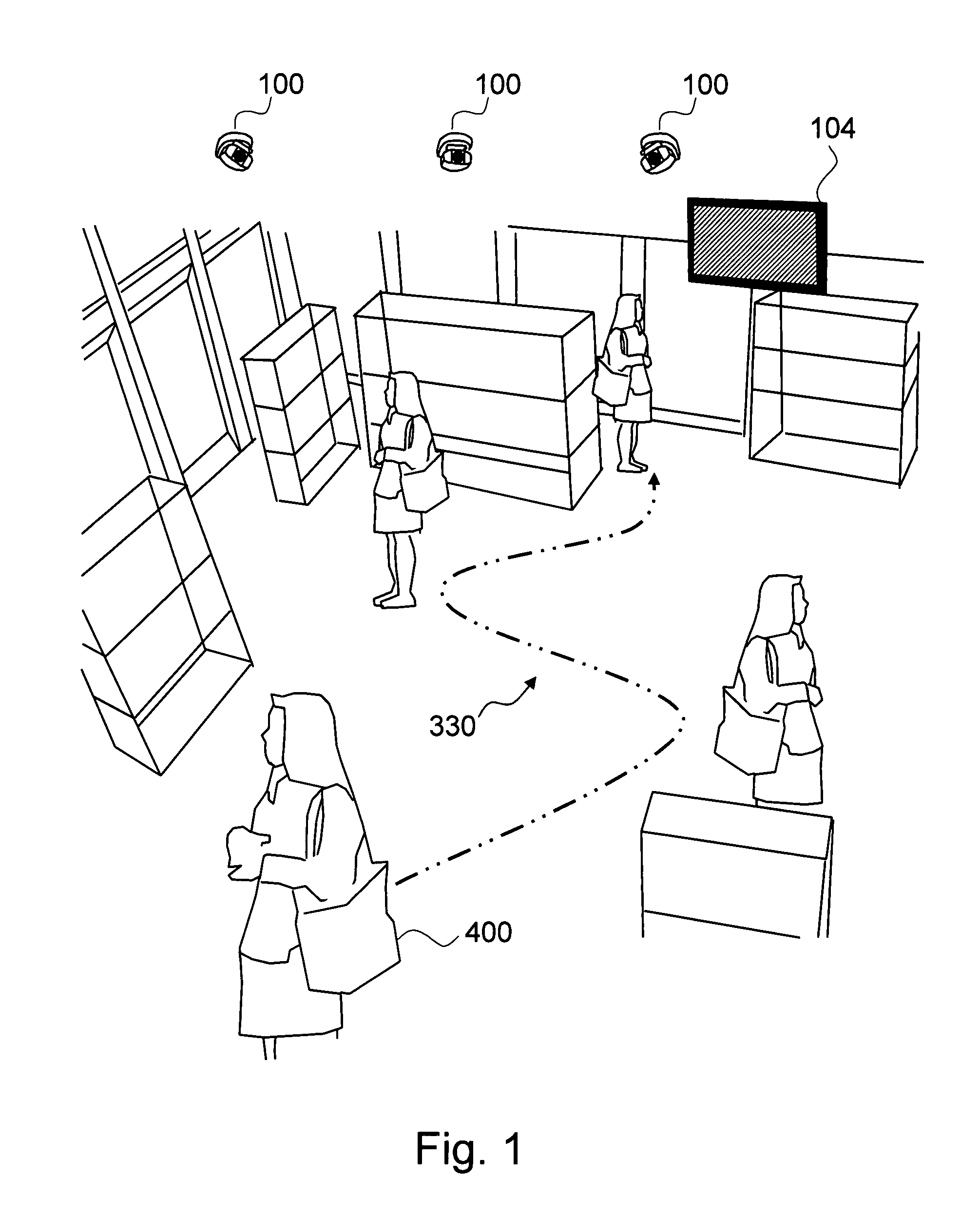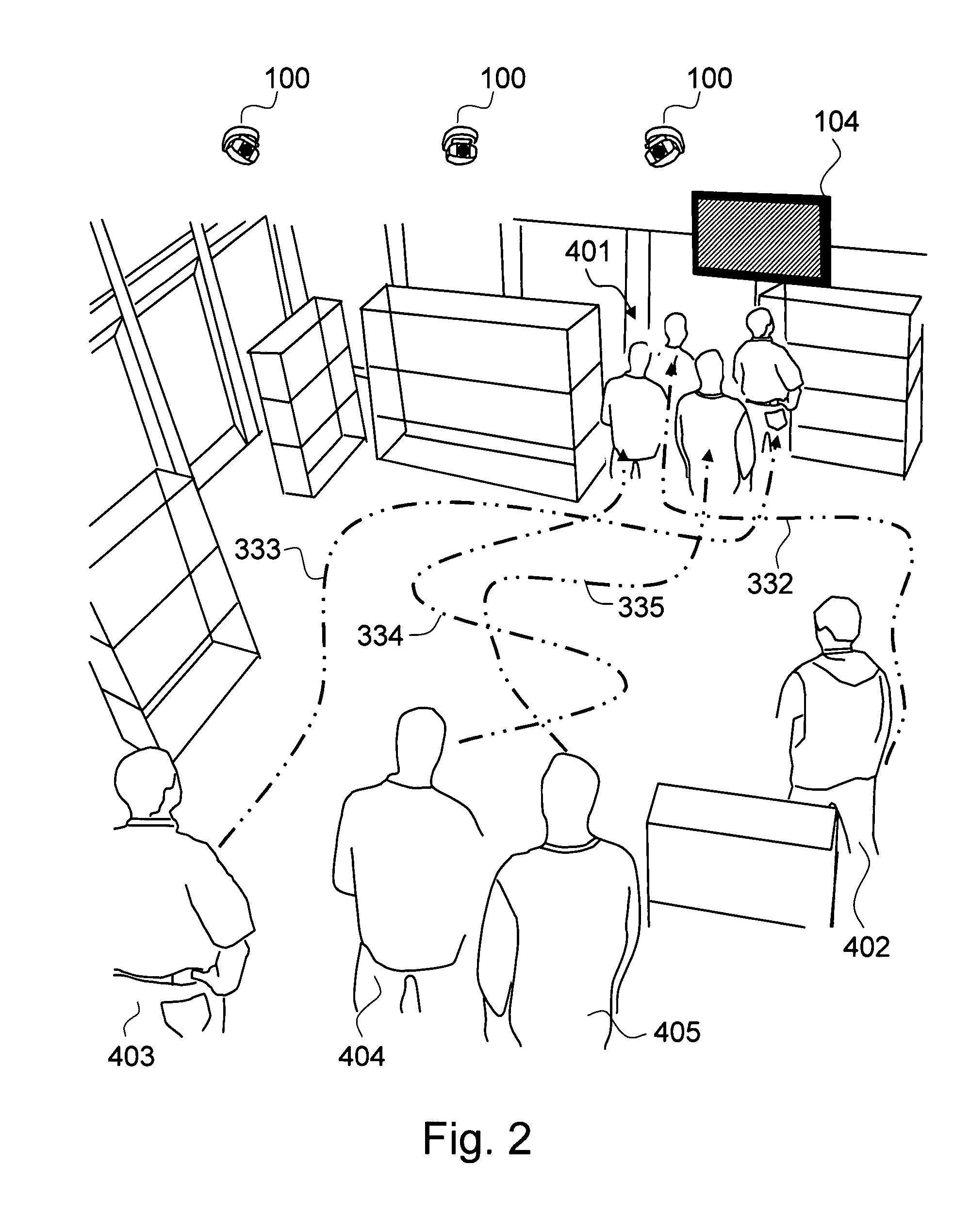Method and system for narrowcasting based on automatic analysis of customer behavior in a retail store
a technology of automatic analysis and narrowcasting, applied in the field of narrowcasting based on automatic analysis of customer behavior in retail stores, can solve the problems of cumbersome use of system access cards, inability to target customers, and inability to achieve automatic collection of user information by stein, so as to achieve incremental interest and sales, improve the probability of purchase, and efficiently target customers
- Summary
- Abstract
- Description
- Claims
- Application Information
AI Technical Summary
Benefits of technology
Problems solved by technology
Method used
Image
Examples
Embodiment Construction
[0068]FIG. 1 shows an overall view of an exemplary embodiment of the invention. In the exemplary embodiment, the present invention tracks and analyzes the behavior of a customer 400 through the path 330 the customer 400 took in a retail store and automatically narrowcasts the advertisement for targeted advertising based on the analysis of the behavioral pattern of the customer 400. The present invention is called behavior based narrowcasting (BBN). In an exemplary embodiment shown in FIG. 1, the BBN system first captures a plurality of input images of the customer 400 in a store through a plurality of means for capturing images 100. Then, the BBN system processes said plurality of input images in order to analyze the behavior of the customer 400. Based on the information from the analyzed behavior, the BBN customizes the display contents for the targeted advertising in real-time while the customer 400 is in motion in the shopping path 330 in the store. The means for displaying outpu...
PUM
 Login to View More
Login to View More Abstract
Description
Claims
Application Information
 Login to View More
Login to View More - R&D
- Intellectual Property
- Life Sciences
- Materials
- Tech Scout
- Unparalleled Data Quality
- Higher Quality Content
- 60% Fewer Hallucinations
Browse by: Latest US Patents, China's latest patents, Technical Efficacy Thesaurus, Application Domain, Technology Topic, Popular Technical Reports.
© 2025 PatSnap. All rights reserved.Legal|Privacy policy|Modern Slavery Act Transparency Statement|Sitemap|About US| Contact US: help@patsnap.com



